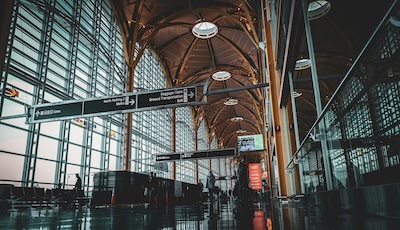Creating customer-centric experiences requires a commitment to a strategy and structure, driving a customer-centric culture, and implementing the requisite resources, capabilities and processes.
Many airlines talk about being customer-centric – or at least, how they want to be customer-centric. However, it's not just a case of saying it or thinking about it.
This journey to customer centricity has a clearly defined beginning and end spanning the progression of touchpoints.
Customers don’t know or care who in an airline owns the individual experience of purchasing a ticket, boarding, disruptions, call centres and so forth. From their perspective, these are all part of a single customer journey.
Atmosphere Research’s President, Henry Harteveldt puts it this way in a report called ‘Maximizing Revenue across the Traveller’s Journey’ commissioned by Enterprise Ireland, the Irish Government’s trade and innovation agency: “Entering the era of complete retailing is the next frontier for travel retailers, where they are dynamically creating and selling relevant, personalised, appealing offers to travellers. Cloud and machine learning technologies that deliver data driven responsive technologies will be core to this.”
Here are the seven steps that retailers and other consumer-driven businesses follow to ensure they put the customer at the heart of what they do.
1. Implement Customer-Centric Strategy, Leadership and Culture
- Does your senior leadership team truly understand what they mean by ‘customer-centricity’ across all functions?
- Is this commitment communicated in a way that everyone, including staff, can understand?
2. Build Customer-Centric Capabilities & Resources
- Does your airline have the necessary resources and capabilities to deliver on customer-centricity? These resources are budget, people, systems and data.
- How are your Customer-Centric capabilities being measured? Are there clear goals and KPIs to measure progress?
3. Develop Customer-Centric Organisational Structures
- Is the airline organisational structure built around serving customers or around operations?
- What new structures can be created to revolve around customers?
4. Mine for Customer Insight
- Do you have systemic approaches, both quantitative and qualitative, to understand your customer and their (changing) needs?
- Does your airline have the correct systems in place to keep a real-time pulse on changing customer preferences?
5. Create Customer-Centric Customer Experiences
- Does your airline truly understand your customers' journey, and where + when they interact with you?
- Is your airline continually seeking to measure and improve those experiences?
6. Drive Customer-Centric Processes
- Are your processes and policies (e.g. pricing, bundles, refunds etc) designed around your customers' needs or around what the airline needs?
- Customers now need digital, low-touch experiences: do you have the content, tools and delivery models in place to help consumers navigate each touchpoint with your airline?
7. Create Customer-Centric Ancillary Products
- Are your ancillary revenue products creating value or extracting value from customers?
- Can you innovate your ancillary offering to go beyond the conventional offers of seat upgrades, bag check, and car hire?
- Do your ancillary opportunities map to the customer journey rather than the other way around?
- Are you choosing partners who have both appealing business models and add value to the customer’s trip experience?
In conclusion, airlines must make it simpler for customers to purchase auxiliary services at various points during their journey in order to grow their ancillary revenue streams.
In order to provide more pertinent ancillaries to customers, they also need to broaden their network of partners.
This calls for new platforms that go beyond what is currently being done and how they are provided in order to bring together a wide range of products and services in one marketplace.
Contrary to what many might believe, airlines are in a better position than ever to capitalize on these opportunities. Carriers have a direct relationship with many of their customers through their website (direct bookings) and their loyalty programmes, which are only increasing in value.
The question is will airlines grasp this opportunity to become truly customer-centric rather than just go back to a pre-pandemic mindset?
This article was written by guest author, Colin Lewis. Colin is a marketer with over 25 years experience in airline, travel and technology brands in Europe, Asia and Australia.Colin was the CMO for OpenJaw Technologies, the leading travel eCommerce technology provider powering the websites of British Airways, Cathay Pacific and Four Seasons. Before OpenJaw, Colin was Director of Marketing for bmi – British Midland airlines and held senior marketing roles in City Jet, Aer Lingus Regional and Thomas Cook in Asia and Australia.








